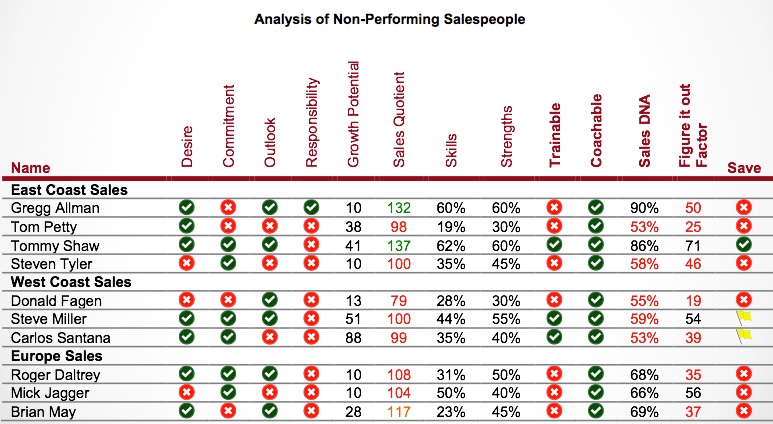- March 25, 2015
- Posted by: Dave Kurlan
- Category: Understanding the Sales Force

Recently, I was asked to explain what a company can do with the bottom 74% that I write about so frequently. It’s a great question…and I will share several examples…Depending on the size of your sales force, the relative effectiveness of your sales coaching, the degree to which you embrace sales best practices, and your track record at selecting and hiring only A players, your sales force might not have a top 6%, next 20% and bottom 74%. Nope. It could be better – or worse. Your sales force might have salespeople that are all in the top 26% or all of your salespeople might belong to the bottom 74%. What’s interesting is how that plays out.
For example, let’s look at a business where the sale is fairly easy, like providing snack food to convenience stores, where salespeople in the bottom 74% can get that job accomplished without a problem. Take another business, where the salesperson must sell a 7-figure consulting deal, to the C-Suite, against formidable competition, with a sales cycle that could take 12 months or more, and a salesperson from the top 26% probably won’t be good enough. For this scenario, a person will need to come from the top 6%!
With that as a foundation, let’s take a deeper look at the bottom 74%. First, there are two things we need to acknowledge:
- You probably don’t know if any of your salespeople are in the bottom 74% unless you have had your sales force evaluated by Objective Management Group (OMG). The only accurate observation that you can make without our data is that they are either performing or not performing at your company. You can guess that the performers are in the top 26% and the non-performers are in the bottom 74%, but both guesses might be very wrong.
- You absolutely need to know if your non-performers can be saved.
With that said, let’s pretend that you do have some salespeople from the bottom 74% who aren’t performing, and that isn’t acceptable to you.
Focusing on the data representing the bottom 74% of the salespeople that we evaluated and studied, it shows that 14% of this group should not be in sales at all. 30% of this group are not trainable, can’t be saved and won’t ever change – no matter what you do. Take a look at this sample slide below, which has an analysis of one company’s non-performing salespeople and you’ll see that in this particular company, 70% of the underperforming salespeople can’t be saved, while 1 (green check) and perhaps 2 others (yellow flags) are savable.

There is good news though. Statistically, 56% of the bottom 74% can be saved under the following circumstances. The company must have:
- The luxury of time
- Energy to spare
- Desire to see these people succeed
- Patience to wait for it
- Effective sales coaching
- Financial resources to wait for them to become productive and to pay for their training, coaching and development.
Plan for it to take around 18-24 months of training and coaching to help these ineffective salespeople become productive. In comparison, salespeople in the top 26% can improve on their existing skills and strong performance in as little as 4-8 months of the right training and coaching.
Sometimes, talking about the bottom 74% makes the state of sales seem a lot worse than it is. If improved performance is one of the things that you need to achieve, it’s entirely possible with salespeople in the bottom 74%. You simply need the data to make a good decision. Learn more about a sales force evaluation by clicking the image below.
{{cta(‘18967b0b-876e-4137-8f74-8c1e8ddb67f4′,’justifycenter’)}}
